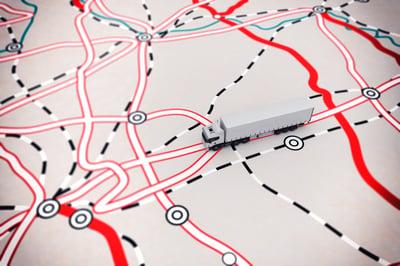Imagine a world where you have a destination in mind, yet you have no idea how to get there, what the terrain is like or what road to take. You only have a description provided by a person who took the journey in the past and their memory is patchy. Yet, they remember tiny details that seem insignificant, like the sound of rushing water, and it helps you to know that somewhere along the journey there’s a river. This example is similar to how logistics management can apply supply chain analysis to find out more about what’s behind our memory of the way things are within the supply chain.
Let’s consider a few facts.
-
You don’t know what you don’t know. If you have no map, you must rely on other sources.
- You have to look beyond the obvious and consider a realm of possibilities.
- You must consider the ways different bits could fit together to chart the area.
The people helping you complete this picture are the analytics developers, those who know a thing or two about what rivers sound like and how the surrounding geography could influence that resonance. A waterfall sounds different from a tranquil river that blends into rapids.
Now, aside from the metaphor of our traveler, the truth about logistics analytics is simple. It’s growing. In fact, the global transportation analytics market size is expected to climb at a 21.6% compounded annual growth rate through 2030, reports Grand View Research. So what does that growth mean for the future of improving today’s supply chain? How can shippers use the advancements in technology and big data analytics to better improve their supply chains?
Well, all applications have a common thread of supply chain optimization, and in turn, that amounts to a greater opportunity to unlock sustainability goals. Let’s explore four uses of analytics and how they enable sustainability in logistics management.
1. Using analytics in route optimization reduces total emissions

The first and most obvious use of big data analytics in logistics management typically surrounds route optimization. Route optimization is based on analyzing trends within current demand to reduce empty backhauls, aka deadhead, to effectively lower the total distance the trucks travel, and thus the emissions, by eliminating subsequent trips. In other words, driving with a load each time on both the headhaul and backhaul reduces the emissions associated with a single shipment or multiple in the case of LTL.
However, seeing these opportunities can be troublesome at best. Analytics make it easier to see when and where a backhaul might exist.
2. Sustainability goes beyond emissions
Sustainability derived from applied business intelligence tools extends well beyond the walls of a diesel tank. Sustainability includes being wise with human capital, for instance, treating workers fairly and without unreasonable expectations for performance KPIs. Ironically, this productivity is easier when analytics are in play.
Analytics help to identify ways to work smarter, not harder, and if we go back to our river traveler, analytics in this fashion might have meant understanding local dialects spoken along the river, and how asking smart questions in the right way helped him find his destination faster.
Data analytics work the same way, helping you to remember those tiny details that help make people easier to work with, improve performance, and boost overall safety. It’s the ultimate win.
3. Improving customer experiences builds on sustainability goals
 The customer experience may not seem like an ideal place to extract logistics insight, but it’s actually one of the areas in which applied analytics can add even more value. By using analytics to accurately predict estimated time of arrival (ETA) and keep your customers informed, you’re reducing the risk of a back charge or return. It’s this action, building a positive experience even when problems or delays occur, that can encourage your customers to keep their shipments, reducing returns. As a result, the total carbon footprint for that shipment decreases.
The customer experience may not seem like an ideal place to extract logistics insight, but it’s actually one of the areas in which applied analytics can add even more value. By using analytics to accurately predict estimated time of arrival (ETA) and keep your customers informed, you’re reducing the risk of a back charge or return. It’s this action, building a positive experience even when problems or delays occur, that can encourage your customers to keep their shipments, reducing returns. As a result, the total carbon footprint for that shipment decreases.
4. Visibility into operations to know what to expect
The last and perhaps most impactful use of analytics in the freight and logistics landscape is all about visibility. Remember how we mentioned that you don’t know what you don’t know? Analytics rely on connected systems and advanced APIs that work across endpoints between third-party systems and your ERP platforms. These APIs are built to help you see what you can’t usually see from your corner of the business. In a sense, analytics build visibility into and across all operations. As a result, you can better inform all decisions and recognize when an opportunity arises. That same opportunity could extend into any of the other three opportunities for improving sustainability too.
Get on the path to success in logistics management with IL2000
We get the truth of logistics management in today’s interconnected and stress-laden supply chain. You have a mountain of responsibilities and a river of risks that threaten to pull you off course. But that river is a source of opportunity, provided you have all the different details that help make your way to the great mouth of the waterway and onward into your next journey. Using analytics is the key to supply chain sustainability, and you shouldn’t simply avoid them for fear of what awaits down the road.
Explore the possibilities of success in your supply chain through expert-guided analytics by connecting with a consulting engagement executive today.

